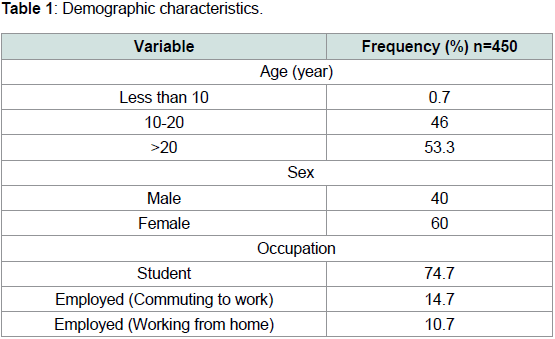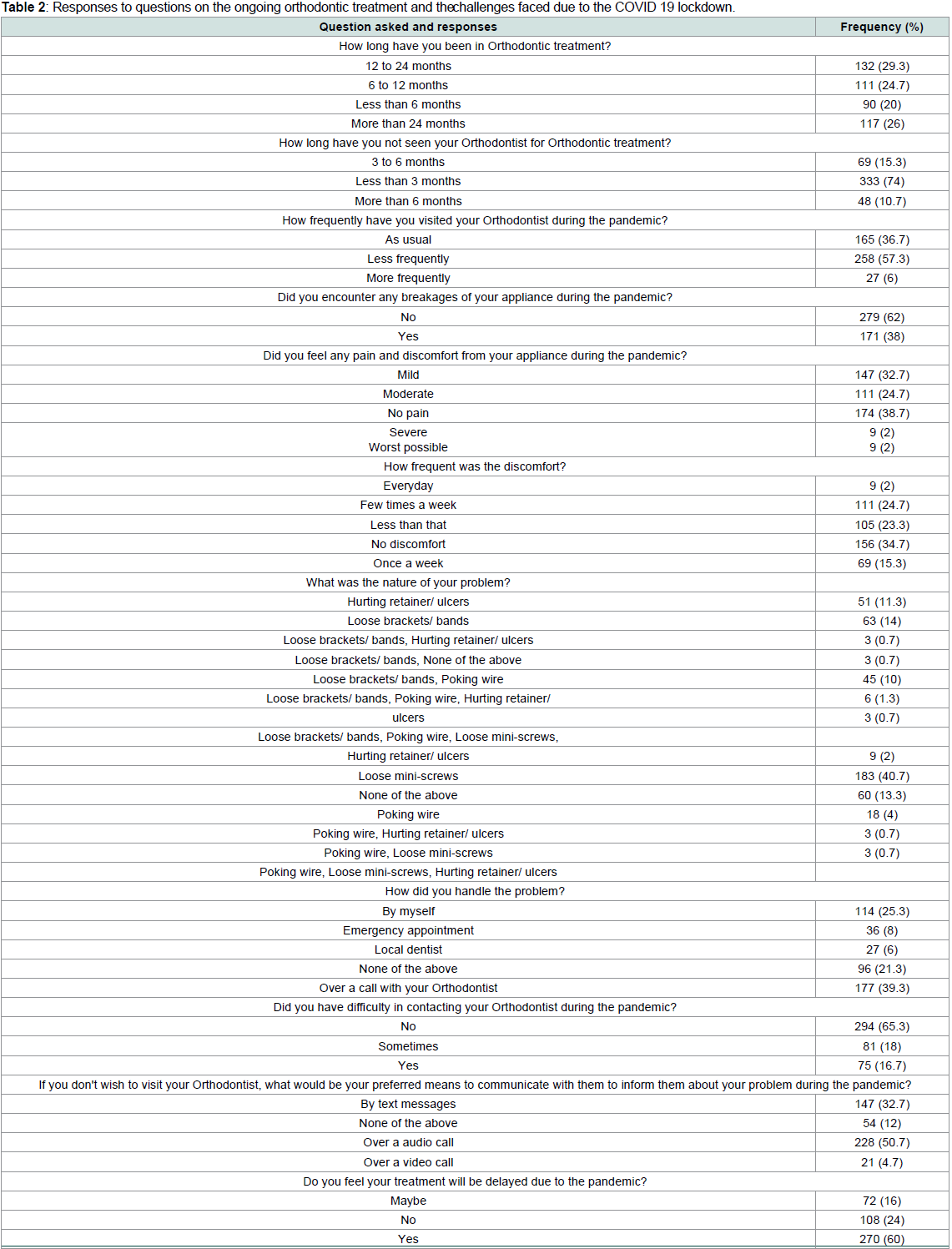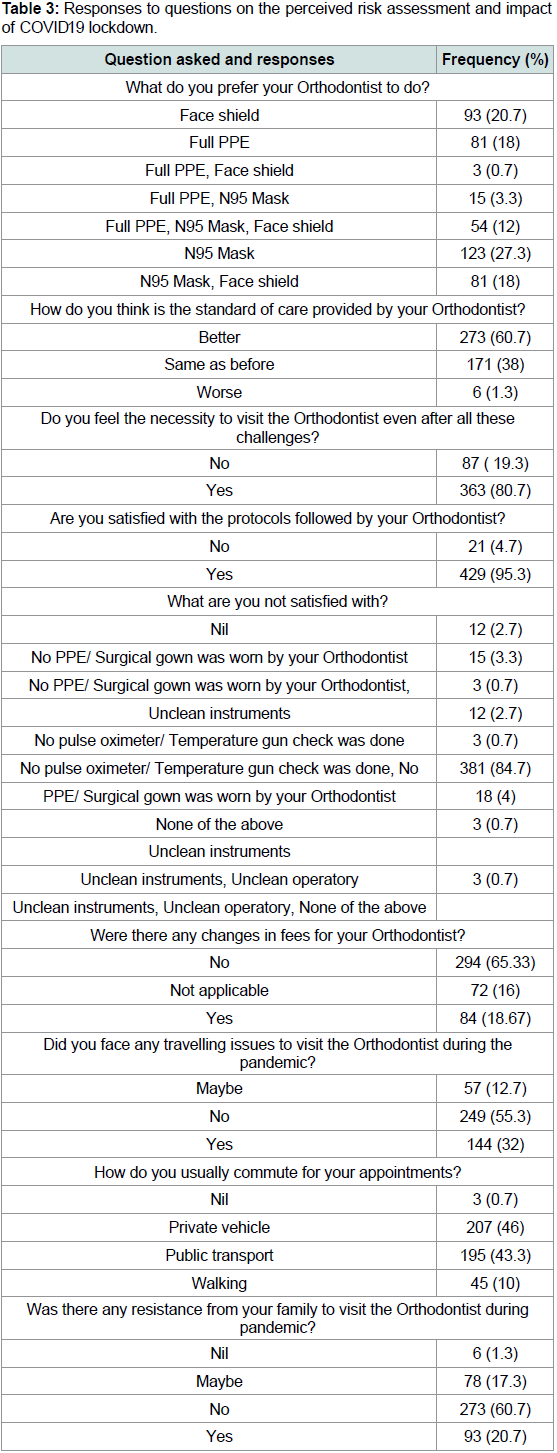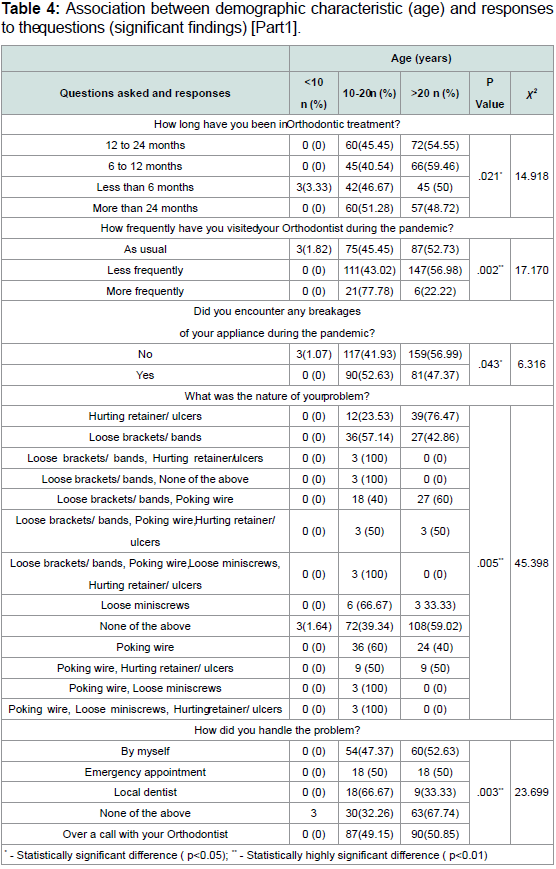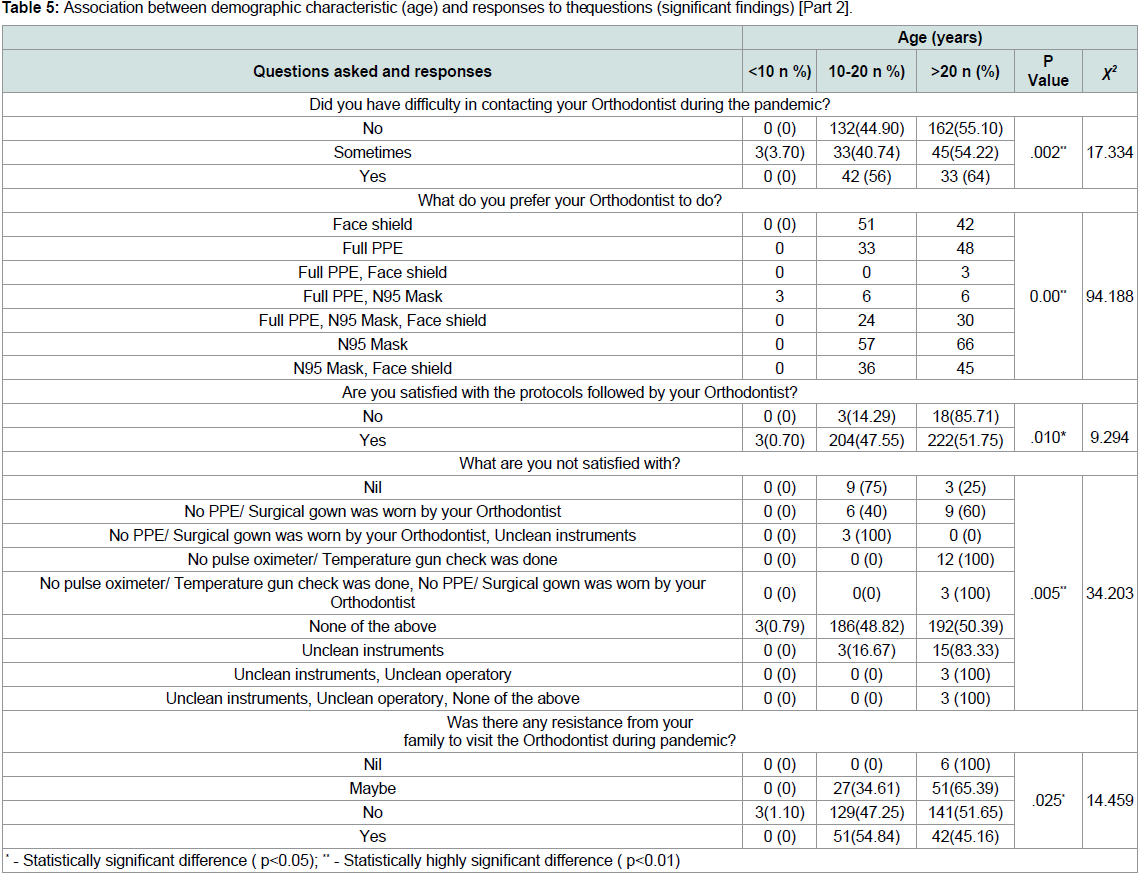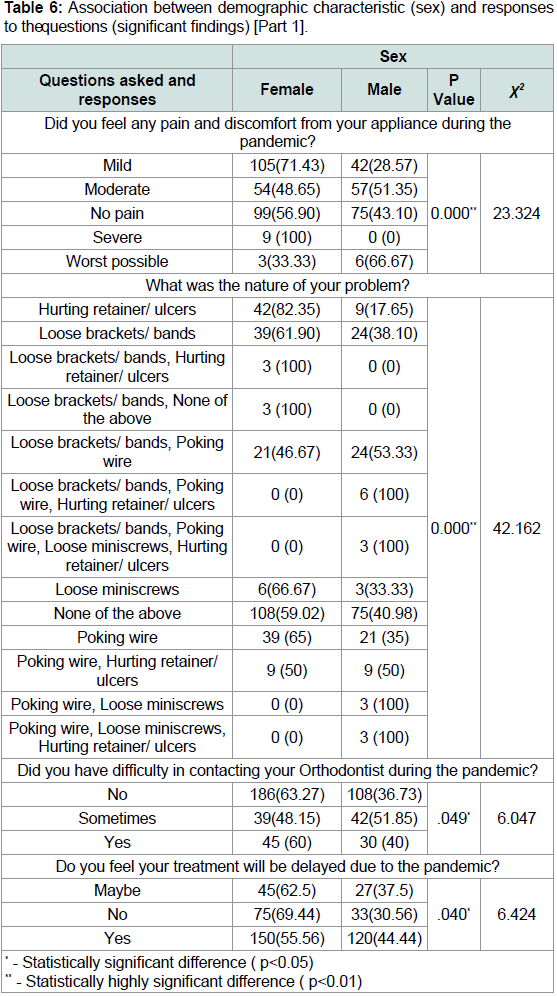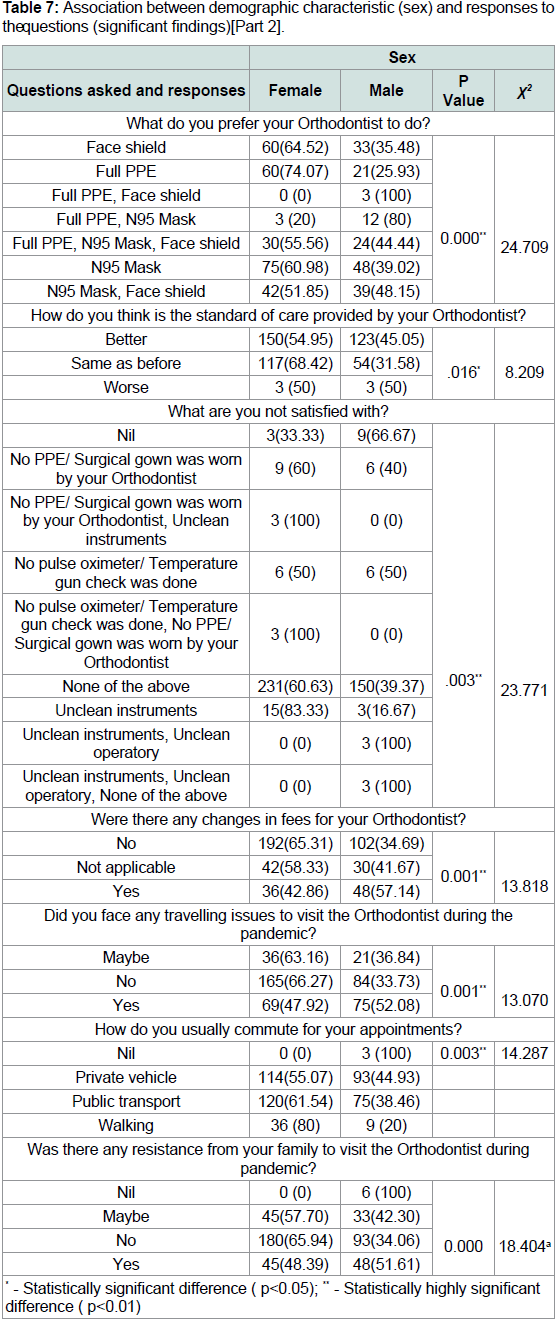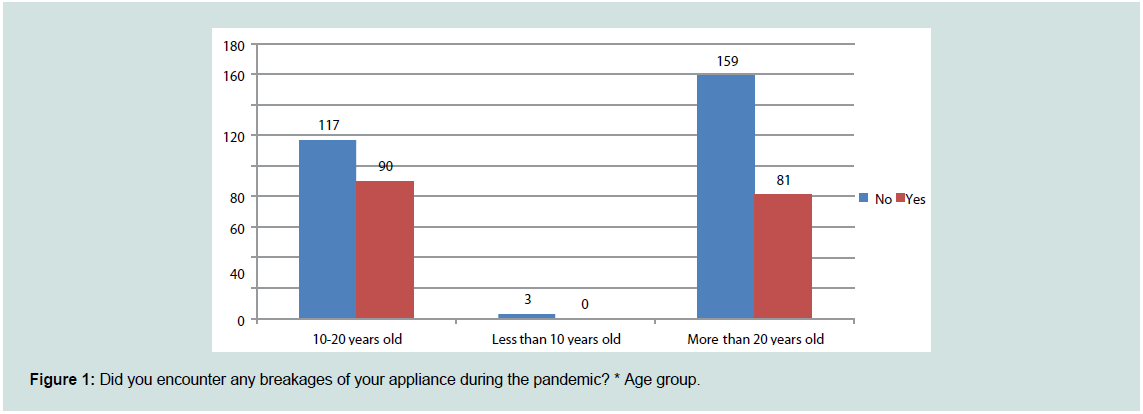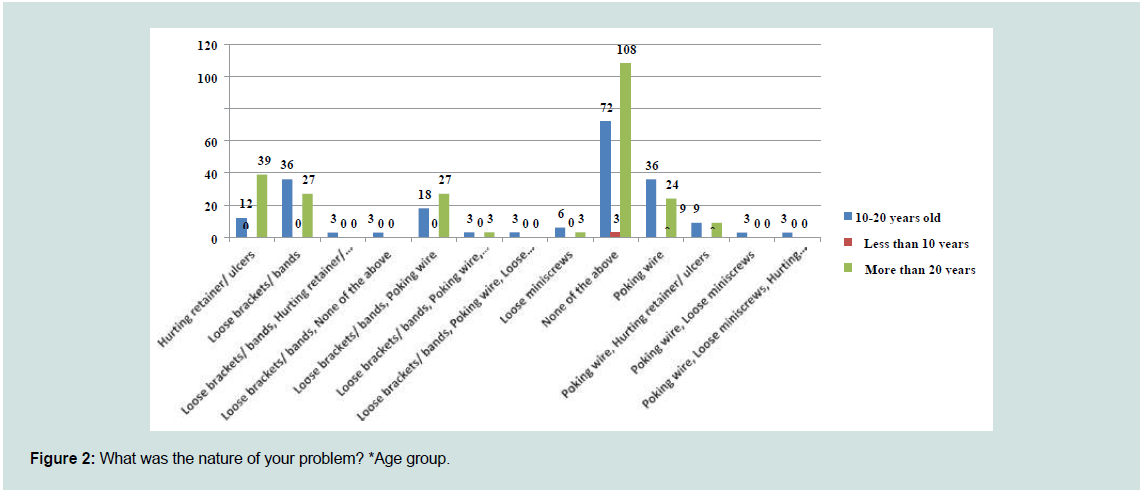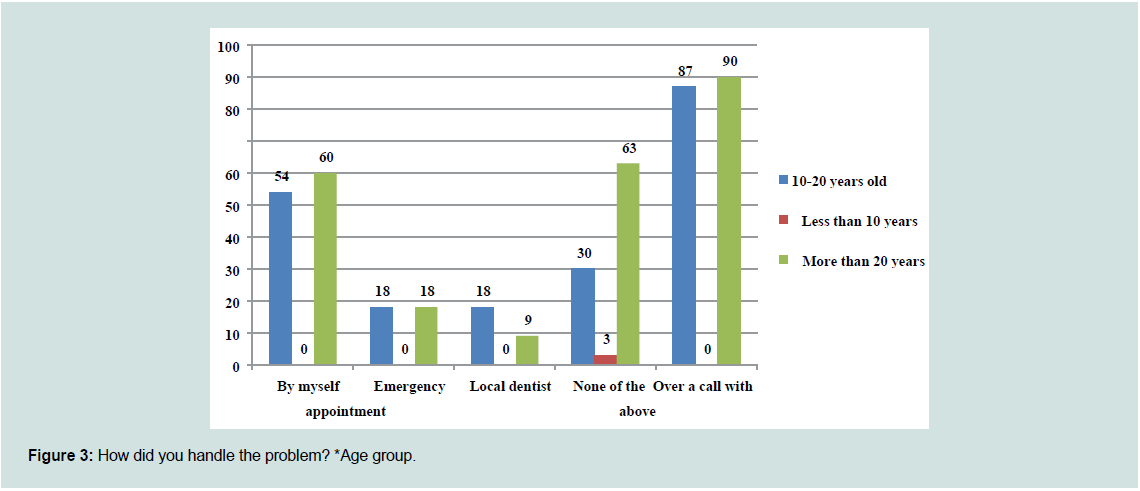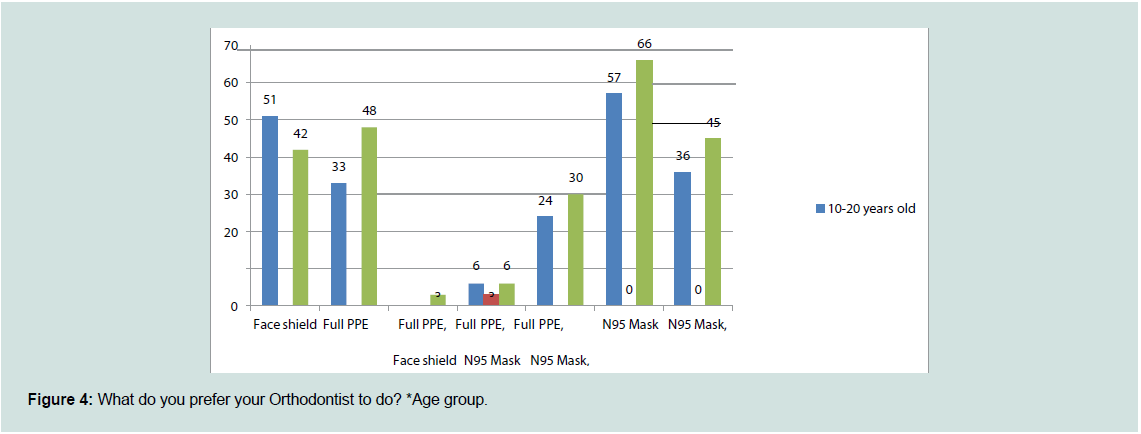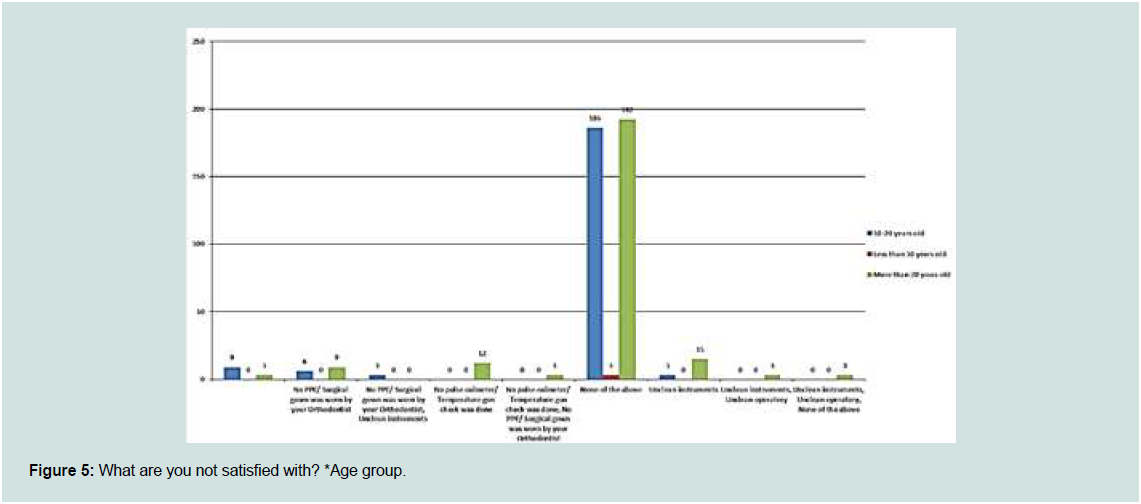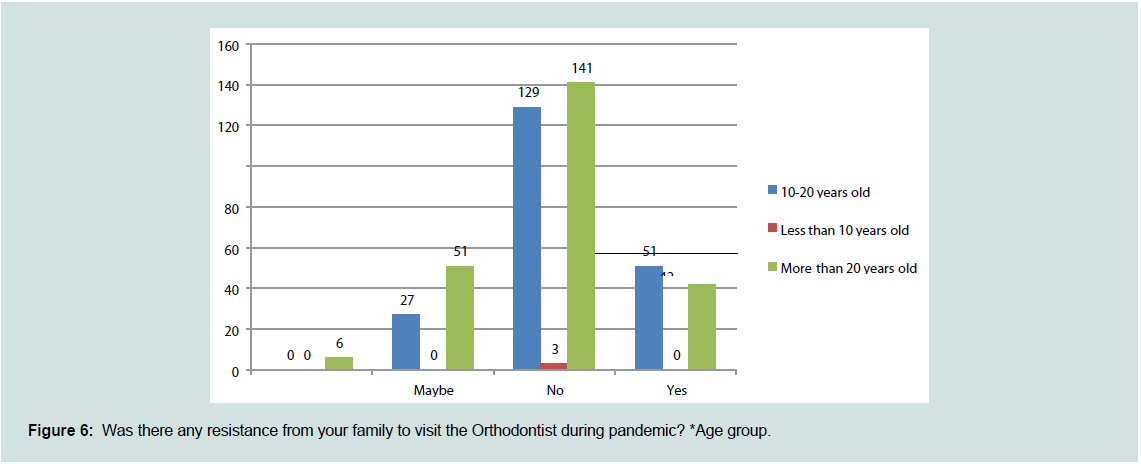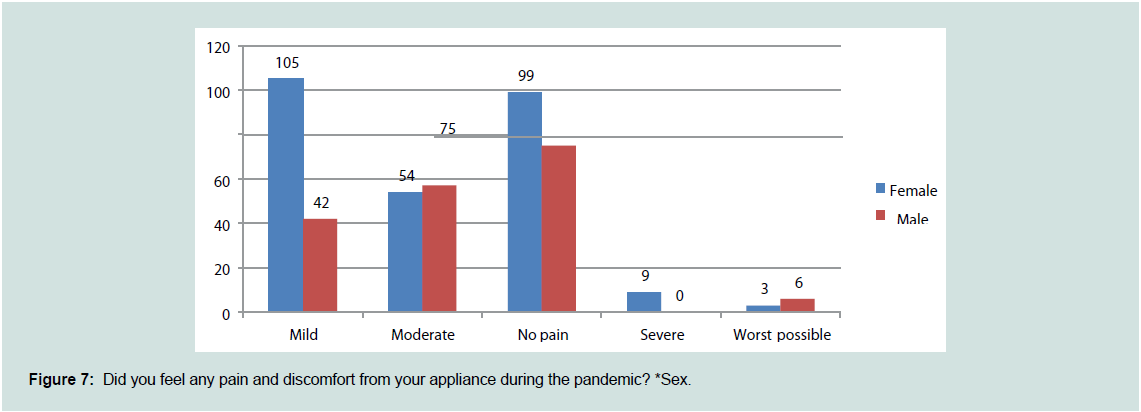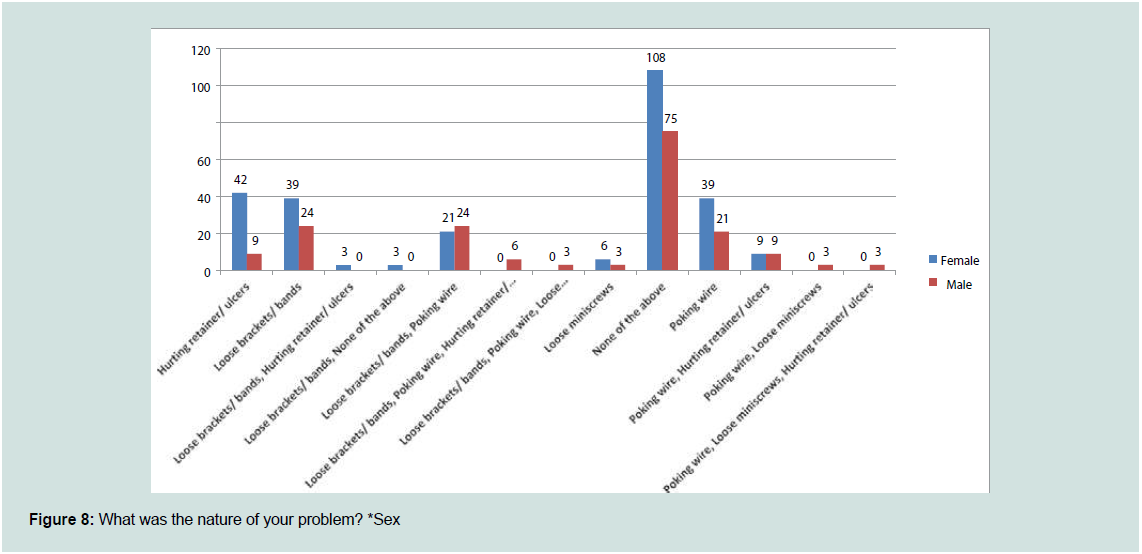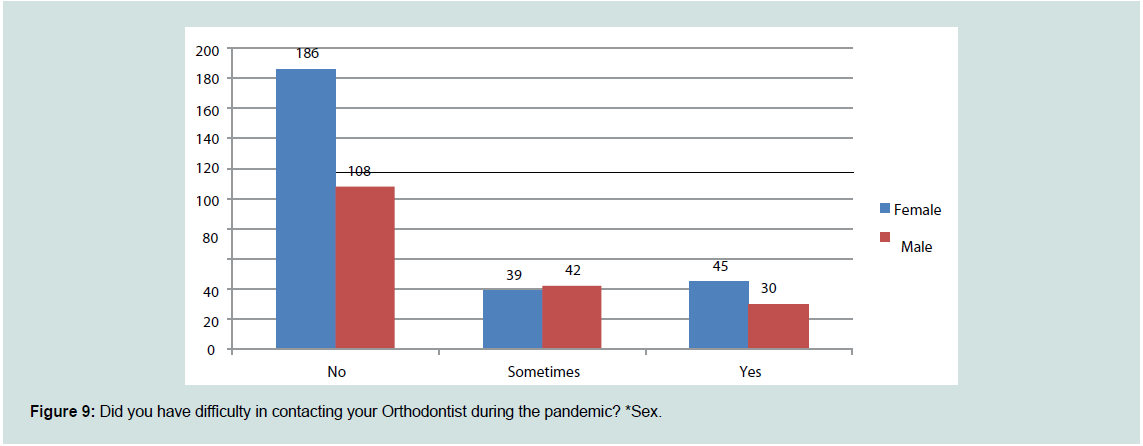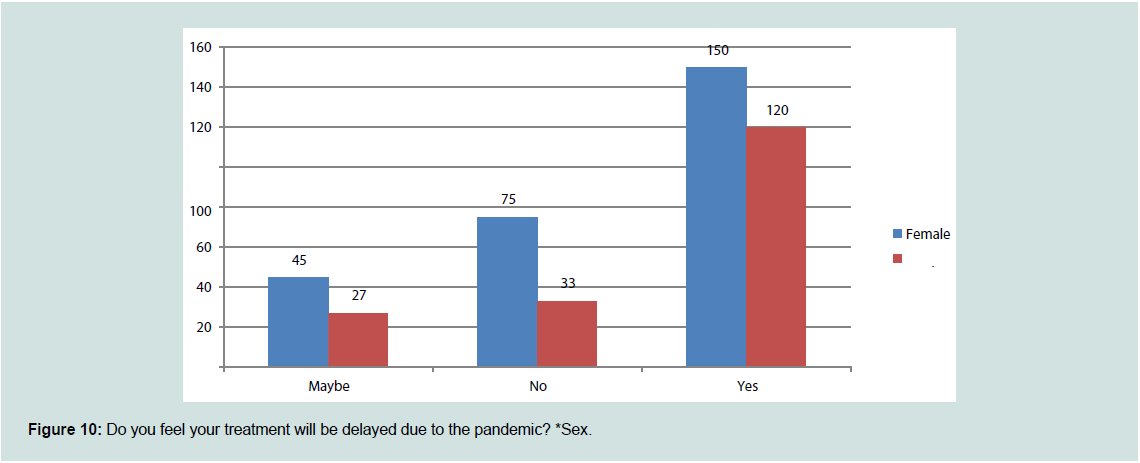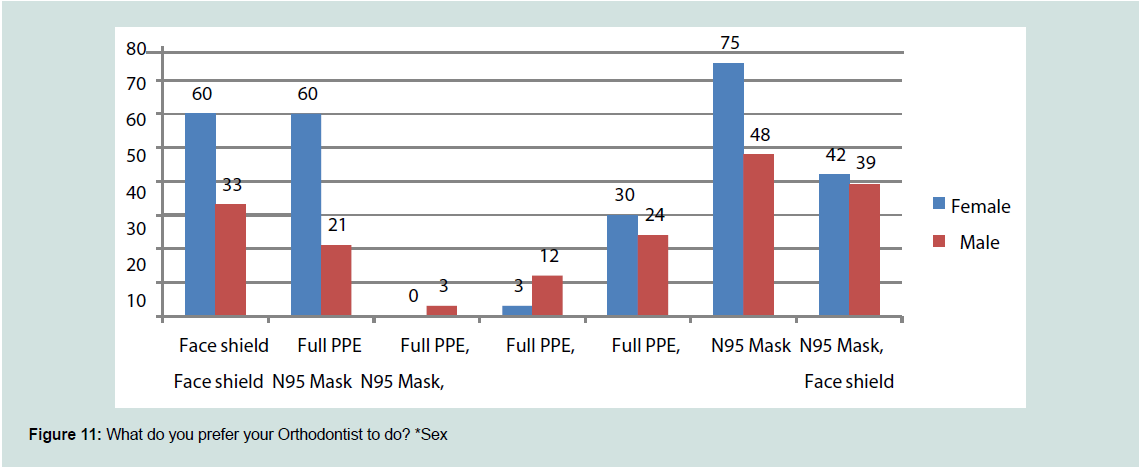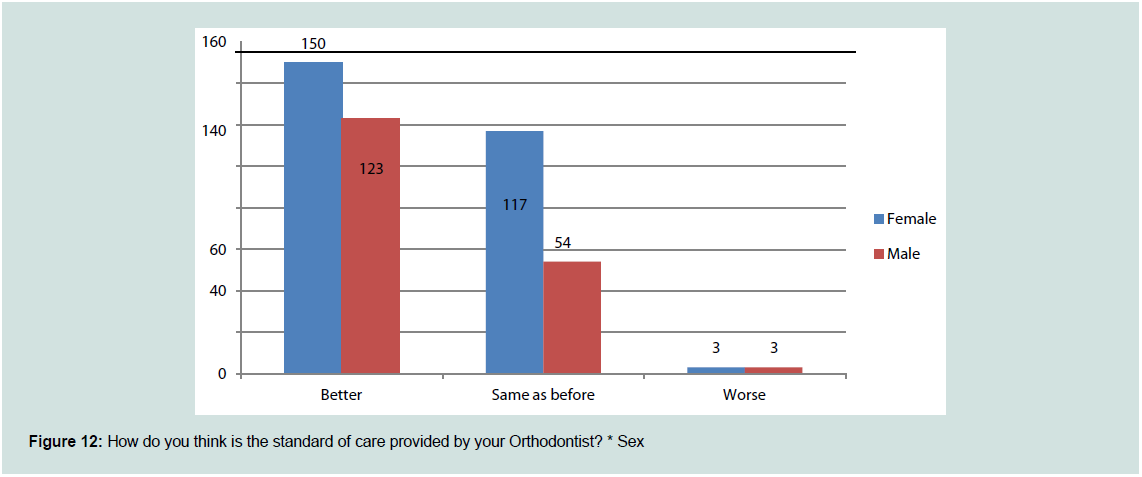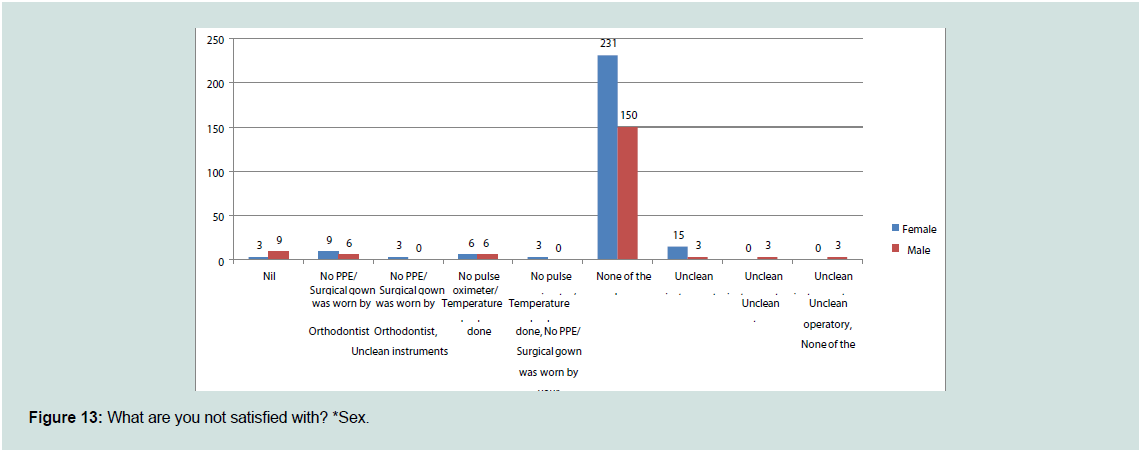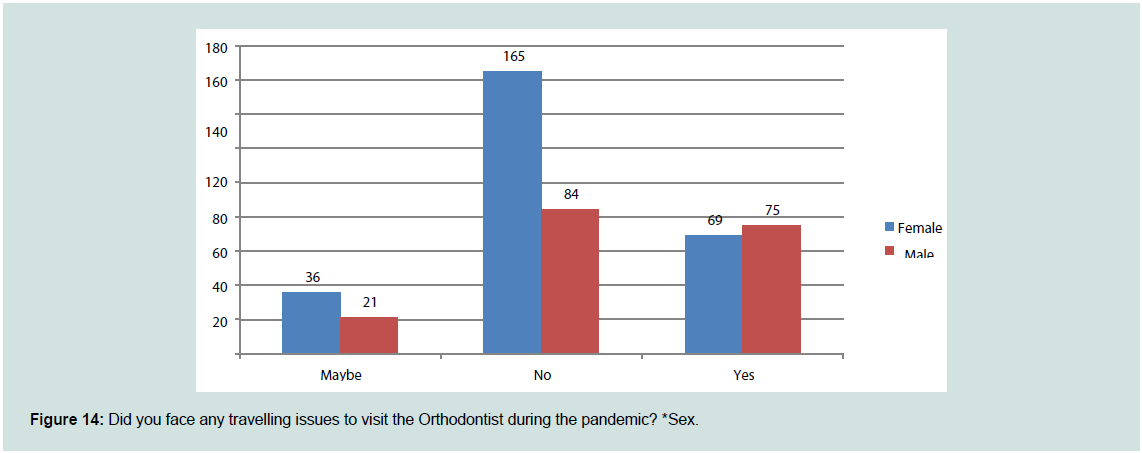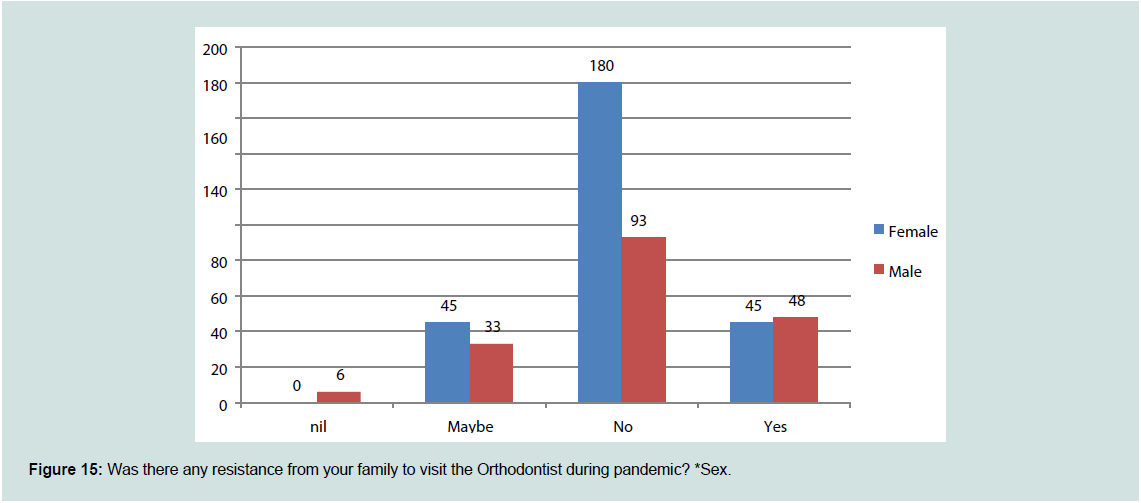Journal of Oral Biology
Download PDF
Research Article
Awareness, Challenges and Impact of COVID-19 Lockdown: Orthodontic Patient’s Perspective
Jain AA*, Kolge NE, Kurhade A, Ravindranath VK, Mhatre AC and Gheware A
Department of Orthodontics & Dentofacial Orthopaedics, MGM
Dental College & Hospital, Navi Mumbai, Maharashtra, India
*Address for Correspondence: Jain AA, Department of Orthodontics
& Dentofacial Orthopaedics, MGM Dental College & Hospital, Navi Mumbai,
Maharashtra, India; Phone: 9167021434; E-mail: anchal.8996@gmail.com
Submission: 17-May-2022
Accepted: 20-June-2022
Published: 22-June-2022
Copyright: © 2022 Jain AA, et al. This is an open access article
distributed under the Creative Commons Attribution License, which
permits unrestricted use, distribution, and reproduction in any medium,
provided the original work is properly cited.
Abstract
Context: Owing to the increase in COVID 19 cases, a lockdown was
declared in India on 24th March 2020. All the dental facilities except for
emergency procedures were suspended. Due to the lockdown, the periodic
visit to the Orthodontist became difficult, which would eventually affect the
Orthodontic treatment.
Aim: The aim of this study was to assess the awareness, challenges
and impact of COVID-19 Lockdown on Orthodontic patients.
Materials & Methods: A self-designed online questionnaire of 24
questions was designed and distributed among 450 participants via
WhatsApp messenger and email.
Statistical analysis used: Comparison of frequencies was done using
chi square test.
Results: The study revealed that majority patients were affected due
to the pandemic and feared increase in duration of the treatment due to
the same. Most common problems were loose bands/brackets and poking
wire. Some faced resistance from family for visiting the Orthodontist during
pandemic.
Conclusions: Majority found it necessary to continue treatment
even after all difficulties. Continuous reassurance to the patients by the
Orthodontist is required, by doing regular follow ups. At the same time, the
awareness about the pandemic should be increased amongst the patients
so that precautionary measures can be taken from their side to prevent the
spread while continuing their orthodontic treatment.
Keywords
Awareness; Challenges; COVID 19; Lockdown; Orthodontics;
Impact; Pandemic, Survey
Introduction
In December 2019, there was an outbreak of a severe pneumonia
of unknown etiology in Wuhan China. The concerned virus was
initially called the novel coronavirus 2019-nCoV, then as severe
acute respiratory syndrome coronavirus 2 (SARS-CoV-2) by the
International Committee on Taxonomy of Viruses [1]. COVID 19
was declared a pandemic by WHO on January 30, 2020 and since
then there has been a rapid spread throughout the world. There have
been 214,468,601 confirmed cases of COVID-19 globally, including
4,470,969 deaths, reported to WHO. In India, from January 3, 2020
to August 27, 2021, there have been 32,603,188 confirmed cases of
COVID-19 with 436,861 deaths, reported to WHO [2].
Patients reported with COVID-19 show symptoms of lower
respiratory tract infection, including coughing, fever, generalized
fatigue, sneezing, vomiting, and severe pneumonia [3,4]. The
symptoms range from mild, moderate, severe, critical, and sometimes leading to death. Many are asymptomatic while others present with
symptoms like Acute Respiratory Distress Syndrome, sepsis, septic
shock, and multiple organ failures in critical patients with high
reported deaths [5].
The mode of transmission includes sneezing, coughing, close
contact talking, aerosol contamination and direct contact with any
contaminating surfaces. The incubation period is 14 days up to 24
days [3,6,7].
Various orthodontic procedures such as bonding, debonding,
replacement of debonded brackets are aerosol generating. These
travel short distance and settle on dental surfaces, operator and/or
patients, posing high risk of cross infection. However, meticulous
infection control measures could reduce the risk of cross infection
[8].
Owing to the rising cases in India, a lockdown was declared on
March 24, 2020. In the initial phases of the COVID-19 “lockdown” in
India, dental clinics were shut as it was feared that aerosols generated
in dental practice could fuel the spread of the virus and other factors
[9,10].
With the pandemic increasing, the importance and need for oral
health emergency requirements was understood, strict regulations
and guidelines were issued, and emergency services were opened up.
Orthodontics is an elective specialty, dealing with the treatment
of malocclusion, with the treatment lasting for about two-three
years and the need for regular reporting of the patient to the clinic
every six-eight weeks. Thus, delaying the treatment until the end
of pandemic will inadvertently prolong the treatment. COVID
19 has not only affected the orthodontic treatment due to missed
appointments and fear of contracting the disease, but also due to
emotional, psychological and financial crisis [11].
This study aims to assess the impact of COVID-19 lockdown and
the challenges it posed on the orthodontic patients. It will also assess
the knowledge and attitude of the patients towards the disease and evaluate the changes post the lockdown in reference to the treatment
and patient’s expectations.
Material and Methods
This was a cross-sectional descriptive study carried out in 2021.
Self-formulated structured multiple-choice questionnaire consisting
of 24 questions, were distributed to consenting participants. The
participants were patients undergoing treatment in our institute.
Simple random sampling technique was used.
The questionnaires were distributed in form of an online data
collection platform (Google Forms) amongst 450 participants. The
respondents were reached using WhatsApp and via emails. The
questionnaire consisted of demographic characteristics such as age,
sex, occupation and address followed by questions regarding the
participants perceived impact of the pandemic and lockdown on their
orthodontic treatment.
Data was subjected to statistical analysis using Statistical package
for social sciences (SPSS v 26.0, IBM). Comparison of frequencies of
categories of variables with groups was done using chi square test.
For all the statistical tests, p<0.05 was considered to be statistically
significant, keeping α error at 5% and β error at 20%, thus giving a
power to the study as 80%.
Results
450 participants responded to the survey. The questionnaire
consisted of questions, categorized into three domains (Table 1-3):
The predominant age group was found to be >20 years (53.3%)
with a female predominance (60%). A majority of the respondents
were students (74.7%) [Table 1].
A set of questions addressed the details about the ongoing
orthodontic treatment and the challenges faced due to the COVID
-19 Lockdown. A majority of the respondents had been undergoing
orthodontic treatment since 12-24 months (29.3%). Maximum
patients had not visited their orthodontist for a span of less than three
months (74%) with the majority having visited their orthodontist
less frequently than usual (57.3%). A majority of the patients did not
experience any appliance breakage during the pandemic (62%) and
did not encounter any kind of pain or discomfort (38.7%). Amongst
the ones who experienced pain and discomfort, the problem in the
majority was broken brackets/bands (14%) and poking wires (13.3%).
Most of these respondents handled their problem over the call with
their orthodontist (39.3%) and very few visited a local dentist (6%).
Majority felt that their treatment was delayed due to the pandemic
(60%) [Table 2].
Table 2: Responses to questions on the ongoing orthodontic treatment and the challenges faced due to the COVID 19 lockdown.
Questions were asked to assess the perceived risk assessment and
the impact of COVID 19 Lockdown. A majority of the respondents
preferred their Orthodontist to be wearing an N-9 5 mask (27.3%)
and the found the standard of care provided by their Orthodontist to
be better than before (60.7%). Majority was satisfied by the protocols
adopted by the Orthodontist (95.3%). Amongst the participants asked and demographic characteristics [age, sex]. [Table 4-7]
Table 4: Association between demographic characteristic (age) and responses
to theq uestions (significant findings) [Part1].
Table 5: Association between demographic characteristic (age) and responses to theq uestions (significant findings) [Part 2].
Table 6: Association between demographic characteristic (sex) and responses
to theq uestions (significant findings) [Part 1].
Table 7: Association between demographic characteristic (sex) and responses to
theq uestions (significant findings)[Part 2].
Descriptive analysis in Figure 1-15.
Figure 6: Was there any resistance from your family to visit the Orthodontist during pandemic? *Age group.
Discussion
Coronavirus pandemic has affected the health care delivery
significantly globally. Orthodontic treatment, though an elective
treatment, requires regular follow up every four-six weeks. Some
orthodontic procedures are time consuming and aerosol producing,
which puts the patient and the orthodontist both at a greater risk
of contracting COVID-19. Owing to the lockdown, which was
announced in March 2020 in India, there were restrictions on
travelling, strict laws pertaining to leaving the home unless necessary.
Dental clinics were also not functioning except for emergency
procedures.
The objectives of this study to assess the impact of COVID-19
lockdown and the challenges it posed on the orthodontic patients.
70% of the participants replied that it has been less than three
months since their last follow up. Fixed Orthodontic treatment
includes brackets and bands fixed into the patient’s mouth, which
increases the plaque accumulation and increased oral hygiene
care. This requires repeated reinforcement and inspection by the
Orthodontist. Along with oral hygiene assessment, the change of
elastics periodically is vital since the elastic force decays over time,
which would significantly affect the treatment. However, the patient
due to the unawareness often overlooks this. Sixty-two percent
participants replied that they experienced no breakages of appliances during the pandemic and only 57.4% experiences mild to moderate
pain. Majority reported back to the dentist due to loose bands or
brackets (14%) or poking wire (13.3%). Other problems like loose
mini-screws, hurting retainers/ulcers were also reported of, but they
were not many.
% handled the problem over the call with their orthodontist and
only 8% required an emergency appointment. Caprioglio et al and
Suri et al have also mentioned in their article that the patients could
handle emergencies themselves by a few simple solutions like using a
nail cutter to cut the distal end of wire, use of wax to block the hurting
wire or tube, etc [12,13].
This study revealed that about 60% of the participants were
worried about the pandemic causing the delay in their treatment.
Treatment length and patient compliance are inversely proportional
to each other. This provides a possible explanation for the reduced
patient compliance during the pandemic [14]. Twenty-four percent
patients were not concerned about the pandemic causing the delay
in treatment. This was in concordance with the results of survey
performed by Shenoi et al [14]. This can be attributed to the external
motivation for treatment or lack of interest.
Questions pertaining to the standard of care taken by the
orthodontist in the pandemic revealed that 60.7% patients felt that
their Orthodontist took better care than before. 95.3% were satisfied
with the protocols followed by their orthodontist. The 4.7% who
were not satisfied had major concerns with the unclean instruments.
Majority of the patients (27.3%) found the use of N95 mask alone
adequate. About 18% respondents preferred their orthodontist to
wear a PPE kit and about 12% wanted their Orthodontist to wear PPE
kit+ mask+ face shield.
Significant relations were found between age and sex with
reference to a few responses by the participants. There was a highly
significant difference with high frequency for response mild pain
and discomfort with females. Higher frequencies of females were
concerned about there being a delay in their treatment due to the
pandemic.
Highly significant difference with higher frequency in the
age group > 20 years was found for less frequently visiting their
orthodontist during the pandemic. They preferred handling their
problem over the call with their orthodontist. Majority of the respondents who were not satisfied with the protocols followed by
their orthodontist were > 20 years of age. Resistance from the family
to visit their orthodontist during the pandemic was more in 10-20
years of age, next in > 20 years of age. These all results imply the
possibility of there being a greater fear of encountering COVID 19 in
the age group > 20 years [15-18].
Limitation of this study included the sample chosen included
patients undergoing treatment from varied period. The restrictions
imposed have reduced with time with the gradual easing of the
lockdown. Thus, the response would vary.
Significance
This study elaborates on the difficulties faced by the patients during
the pandemic and the impact it had on their orthodontic treatment.
With the emergence of different variants of coronavirus, this study
will provide transitory changes for better patient management, in
such uncertain situations in future.
A swift shift to effective electronic and postal means of
communication is necessary. Incorporating illustrative videos, reminder messages and video calls could manage the situation better.
This would ensure constant contact with the patient and provide
reassurance to the patient.
During this period, emphasis should be placed on maintaining
proper oral hygiene practices. This would reduce the adverse effects of
decalcifications, gingival recession and root resorption in the patient.
Conclusion
Even after all the challenges, 80.7% of the participants found it
necessary to continue the treatment. Thus, it becomes necessary
for the orthodontist to give their patients a sense of comfort and
reassurance by regularly checking up on them, empathizing with
them. This would assure the patient that their doctor cares for their
treatment and this would improve the patient compliance in these
difficult times. At the same time, they should be informed about the
seriousness of the pandemic and the required personal protection
measures they should employ to reduce the spread. Only by increasing
the awareness among the patients can the spread of this disease be
reduced along with not having their treatment affected.


